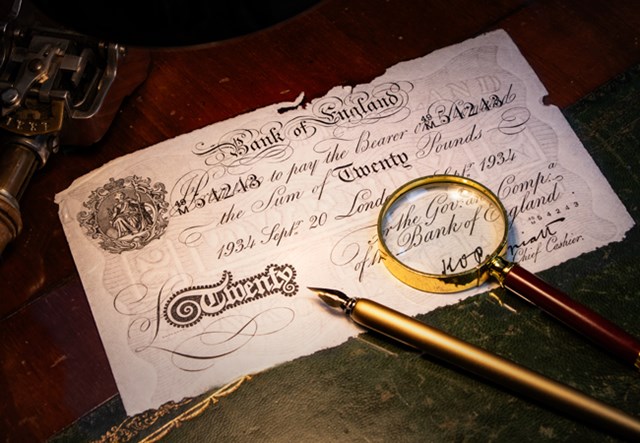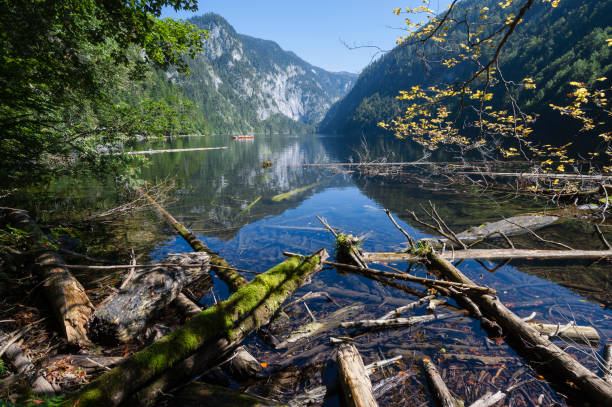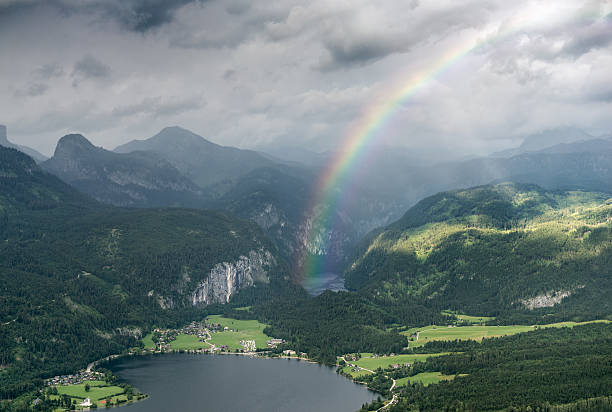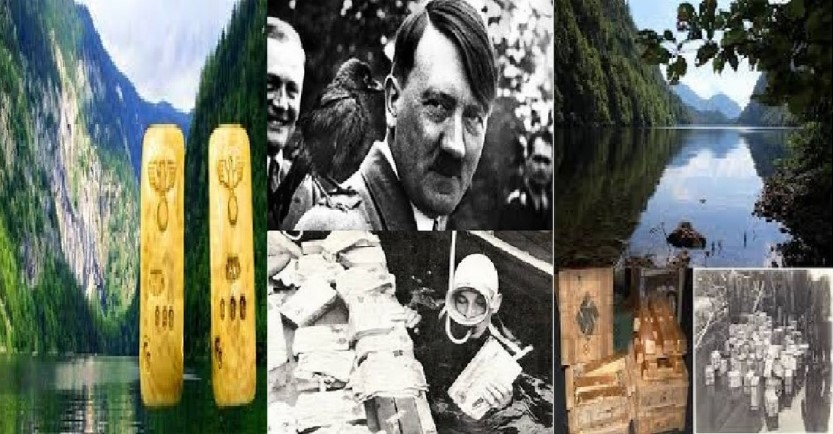From the author.
At the very beginning of his political career, in 1924, Hitler declared that the main goal of his political struggle was the destruction of Bolshevism. This was a response to the threats of the Marxist Comintern (communist-international), who, after unsuccessfully seizing power in Germany and Austria-Hungary, had taken up residence in Moscow, from where they threatened Europe with world revolution and a new war. The response to the Kremlin’s threats was the rise of Fascism in Italy and National Socialism in Germany. Almost all European countries signed the ‘Anti-Comintern Pact’. The nations had just survived the horrors of the First World War and no one wanted a repeat.
Hitler watched Stalin’s preparations. He tried to negotiate with politicians of England and America to work together to counter the plans of the Kremlin aggressor. But the politicians are controlled by the bankers. The British and French bankers Rothschild, who controlled Europe and did not want to see their rival Germany strengthened, decided to push for a military conflict between England America, and Germany. When all attempts by German diplomats to explain the true intentions of the Marxists to the politicians of the leading countries failed, Hitler had no choice but to launch a pre-emptive strike against the Soviet divisions, whose border units were already removing the barriers on the border in preparation for an invasion of Europe. The German people bore the full brunt of that war, but the world community never understood the sacrifice the Germans made for Western civilization. Perhaps it will take the nuclear catastrophe of another war for the world to realize this.
To his last day, Hitler never gave up trying to negotiate a separate peace with Britain and America. But after Anglo-American troops landed on the continent in 1944, opening up a third, northern front for Germany, Hitler, who had given up hope of reaching an agreement, realized:
“In the end, we will be defeated. England refused to honor the armistice, and Churchill would have to bear the main responsibility for the West’s defeat for generations to come. In a future war, Europe could be destroyed in a single day. But if our nation is to survive, it must restore the light of civilization and unite the Western elites. I must leave a rich inheritance for the future great empire that will rule Germany”.
At the end of January 1945, German Finance Minister Ludwig von Krozig reported to the Führer that the gold reserves of the Reichsbank were ready to be evacuated. Hitler gave the order, and hundreds of trucks loaded with valuables headed for prepared hiding places in the Austrian Alps. In the same direction, from Berlin, a convoy of 24 wagons was sent, loaded with gold and platinum in bars and jewelry, as well as countless boxes of currency and securities from various countries, including Reichsmarks. The route and destination of the convoy were secret…
===== ===== =====

OPERATION “BERNHARD”.
By the end of 1943, after the loss of the Atlantic and the Mediterranean, defeats in Africa, and at Stalingrad, the mood in the Reich’s top military circles began to change. Hitler’s generals realized that the war was lost and that its end was only a matter of time. It was at this point that the highest ranks of the SS and SD began to think about setting up a financial fund for the future. Not in Reichsmarks, of course, but in the currency of the future victors, one of their present enemies. It was decided to forge English banknotes. The mass circulation of counterfeit pounds sterling was originally intended to disrupt the financial settlement of America’s military supplies to Britain.
Throughout the history of war, Britain has been a master of this kind of economic sabotage. In its war with America, which was fighting for its independence, it filled the young republic’s financial system with counterfeits to such an extent that American paper money became completely worthless. When France tried to help America, Britain counterfeited its warrants, securities, and even gold louidors. Napoleon responded by ordering the counterfeiting of British pounds. Later, during the American Civil War, Lincoln’s government counterfeited Confederate money to devastate the economy of the warring Southern states.
Stalin’s experts had counterfeited American securities in the 1930s, and during the Second World War American and British bankers forced their governments to counterfeit German Reichsmarks to collapse Hitler’s economy. So there was nothing new in the SS and SD generals’ plan in 1943.
The operation was code-named after SD Major Bernhard Krueger. This major headed a special department for the production of false documents for spies and secret agents of the Reich and knew the whole process and technique. His immediate superior was the head of the SS, Heinrich Himmler. Now, with a new assignment, Krueger took on a job that reeked of real money, provided the forgeries passed inspection. The Sachsenhausen Major put together a team of prisoners from the concentration camp. In choosing the counterfeiters, Krueger may have been guided by the prophet Isaiah, who said of his people: “They are wise in evil, but cannot do good…”.
Incidentally, in Russia, all the so-called “fighters for the rights of workers and peasants” who had never worked a day in their lives, including Ulyanov-Lenin, had forged documents issued by the father of Yashka Sverdlov (the real name of this “Sverdlov” was Moisha Solomon).
Krueger guaranteed his team normal living conditions, hot showers and coffee, clean clothes, regular meals, cigarettes, alcohol, brothel vouchers, and no physical violence. The team accepted the assignment and it was an artist’s job. The valuable British job had 156 secret points. Kruger’s forgers found them all. All the watermarks and paper fluorescence were perfectly copied. A test batch of notes was passed through Swiss banks, and the forgeries were recognized as genuine sterling by banks in Britain. Following the successful test, the Sachsenhausen machine went into full production. Some £135 million worth of orders were placed, about ten percent of all British notes in circulation at the time. The original plan was to drop the counterfeits from airplanes over England to destabilize the economy. However, after the counterfeits successfully passed control, it was decided to launder the notes through Swiss banks and large companies in Holland, Italy, and Hungary. President Roosevelt, who had learned of the operation from his intelligence reports, demanded that Britain and Soviet Russia pay for war supplies only in gold.
Krueger kept all his promises and more. In November 1943 he asked Berlin to reward those who had distinguished themselves in the operation. Twelve forgers who had been decorated for military service were awarded the Reich Prize, six of them the Iron Cross. They were allowed to wear their awards, and one can only imagine the emotion of the concentration camp commandant who, as an officer, had to salute the bearer of the Order of the Reich, pinned next to the Star of David…
***

during the world war II, the lake also served as a Nazi testing station.
LAKE TOPLITZ.
In 1943, after the Americans had begun using high-sensitivity radar to detect and destroy Admiral Denitz’s submarines with depth charges, Hitler ordered his scientists to re-equip the U-boat fleet with the latest weapons. Less than a year later, designers were testing a missile that would allow a submarine to destroy enemy aircraft without surfacing. The tests were carried out on one of the lakes in the mountains of Austria, where they studied the peculiarities of the missile’s movement underwater. In early 1945, when defeat in the war became inevitable, all the workshops on the lake were blown up and some of the equipment and samples of secret weapons were sunk. From captured documents, the victors learned that there were several such lakes containing the secrets of the Third Reich. Some of them still keep their secrets today… 60 kilometers southeast of Salzburg, Austria, in the Dead Mountains, lies a picturesque lake known in guidebooks as the ‘Black Pearl’. The lake is 2 kilometers long and up to 400 meters wide. It is over 100 meters deep in places. At a depth of a few meters, there are ‘underwater islands’. – are clusters of floating tree trunks. Pitch black begins deeper down. Scientists have found that at depths of more than 16 meters, the lake is almost completely devoid of oxygen, there are no living organisms and the bottom silt produces hydrogen sulfide. The locals call it the Devil’s Dump.
In the summer of 1945, fishermen fishing in Lake Toplitz began bringing English pounds to the local bank for exchange. It turned out that the notes were not genuine, but very high-quality counterfeits. The fishermen were questioned and confessed. The Americans realized they had stumbled upon a Third Reich secret. The divers began to dive, but after a few days, one of their oxygen tubes was cut by someone at depth. After this fatal accident, those willing to risk their lives were no longer willing to risk their lives, and work was cut back. And rumors began to spread around the lake, each more fantastic than the last. Researchers and historians said that at the bottom of the lake were crates containing tonnes of gold taken by the Germans from occupied European countries. There was talk of 50 crates taken from the vaults of the Reichsbank in Berlin and 22 canisters of gold belonging to Hitler’s favorite, Otto Skorzeny. There were whispers about 5 kilos of Kaltenbrunner diamonds, about the most valuable collection of stamps belonging to Göring, about missing safes containing jewelry, about the rarest collection of ancient coins… All these speculations were published by the press, the rumors excited the public. And adventurers went to the lake. Nothing was known about sensational finds, but the number of treasure hunters who died in the lake increased every year. And there were new rumors that the lake was guarded by secret ‘commandos’ from the ranks of the former SS and their successors, jealously guarding the Reich’s legacy…

THE DEAD MEN.
In February 1946, the Austrians Mayer, Pichler, and Haslinger arrived at the lake. Engineers and experienced mountaineers climbed the mountain overhanging Lake Toplitz. From there Haslinger escaped for unknown reasons and returned to Linz. The other two disappeared. A month later, a forester discovered empty tents on the shore and the local authorities began a search.
Soon a snow-covered cave was discovered in the Dead Mountains, containing the bodies of Meyer and Pichler. Pichler’s abdomen had been ripped open, his stomach removed and stuffed into a rucksack. Investigations were inconclusive, but it was later discovered that Meyer and Pichler had taken part in secret Nazi weapons tests on the shores of the lake during the war.
In 1947, the priest was identified as a former aide to Bormann, one of the tourists at the site. The priest remained silent about the reasons for his visit to the lake. Two boxes of gold coins were found on his person. When questioned by the investigators, the former assistant pretended to be naive and said that he had taken a collection of coins from the cathedral treasury on the trip because he was afraid they might be stolen by his wife, from whom he had recently been divorced.
In August 1950, one Keller, an engineer from Hamburg, appeared on the shore of the lake accompanied by a professional climber, Gert Gerens. Attempting to climb the steep southern slope of the mountain overhanging the lake, the rope connecting the two climbers broke and Gerens fell into the abyss. Keller survived. Relatives of the dead mountaineer investigated and found out that Keller had been the head of a secret submarine base during the war and had supervised the experimental station at Toplitzsee.
Shortly after the ‘climbers’, three French geologists arrived at a small local hotel near the lake with a letter of recommendation from the army headquarters in Innsbruck. The letter was handed to the local authorities with a request that the police should not interfere with the scientists. After a week the guests left, taking with them four heavy crates of mineral samples (or so they said). When the hotel owner went to the bank to exchange the money he had received from the ‘scientists’, it turned out that all the notes were counterfeit. A cleaner at the hotel told the police that she had heard the guests talking in pure Bavarian dialect.
In 1952, two unidentified men were found shot in the head by a lake.
While the police were investigating, a geography teacher from France, Jean de Soze, was found dead on the other side of the lake. A freshly dug pothole was found not far from the body. It is very likely that the Frenchman had found something and paid for it with his life.
In 1959, the curiosity of sensation-seekers brought journalists from Stern magazine and their diving team to the lake. Over five weeks, the divers recovered 15 wooden and iron crates. Inside were counterfeit British banknotes worth 55,000 pounds sterling. One crate contained documents from the former Reichssicherheitshauptamt (RSHA) and lists of concentration camp prisoners. Several dozen of the discovered boxes were still at the bottom when the operation was abruptly halted. A telegram from the magazine’s editorial office ordered: “Further stay not advisable. Stop the search immediately. “New rumors were circulating that the owners of Stern magazine had been paid a large sum of money to have their men stop the search. Officially, representatives of the Austrian Ministry of the Interior claimed that the boxes found by the expedition from the magazine contained “…exclusively counterfeit English pound sterling notes…”, but at a press conference one of the expedition members blabbed: “…in addition to the counterfeit notes, there were papers among which Himmler’s diaries (!) were not found…”.
The dark adventure continued. In the summer of 1963, three West German tourists visited Lake Toplitz. A few days later, one of them died in the lake. He was a sportsman from Munich, and his companions turned out to be former Nazis and army officers. That same year, Austrian divers found a German plane at a depth of 79 meters. They never found out what was inside, as the expedition was suddenly called off.
On 6 October 1963, a young German diving specialist, Alfred Egner, who had come to Toplitzsee to ‘snorkel’, was found dead. The circumstances of his death were highly suspicious, but the investigation was inconclusive.
A month later, another treasure hunter, Walter Niggle, drowned in a neighboring lake, also under very strange circumstances. Counterfeit money was also taken from neighboring lakes, which were much less well-known than Lake Toplitz, and several strange deaths were also recorded there.
As a result, the Austrian authorities imposed a strict ban on unauthorized diving in the lakes. An Austrian, Albrecht Geisswinkler, a former member of the Resistance, had hoped to obtain a license to lift what was found in the waters of the Toplitzsee, but a certain neo-Nazi organization called “Spider” began threatening to kill him. Threats were probably also made to the provincial government in Graz, and Geisswinkler was officially denied a license…

ADVENTUROUS BIOLOGIST
Twenty years later, in 1983, the biologist Hans Fricke traveled to Lake Toplitz. The purpose of the expedition was to study the lake’s flora and fauna. The researcher made serious preparations and his expedition was even equipped with a submarine.
Fricke himself later admitted what “fauna” the biologists were studying: “…we did not expect to find anything significant during the first dive. We thought we would find some iron and, if we were lucky, some English banknotes. But to our surprise, there was much more on the seabed…”.
His men found the remains of military equipment sunk during the Second World War and the wreckage of a seaplane, possibly the one mentioned by Austrian divers in 1963. Fricke’s sapper divers brought to the surface the remains of rockets, bombs, and mines. It turned out that they were all intended for the ship’s latest weapons systems. Research in the archives revealed that there had been an institute near the lake during the war, testing new weapons for Admiral Dönitz’s fleet.
This discovery turned Fricke, a biologist, into a treasure hunter. He began to investigate the possible link between the institute and the counterfeit banknotes. The explanation was that both the laboratory and the counterfeit banknotes were Hitler’s weapons. The lab was working on a submarine missile system, and the notes were printed to undermine the British economy. So they were both drowned in a lake.
Hans Fricke’s finds included an underwater mine with a fuse that was triggered at a certain depth and a missile that could be launched from underwater and hit targets on land. and the launcher for missiles to be fitted to German submarines. The developers of the system used a winch to descend 90 meters into the lake and launch the missile. These developments by Nazi scientists were later used by American designers to create the ‘Polaris’ missile.
In November 1984, Austrian army specialists appeared on the shores of the lake and all approaches were controlled by the gendarmerie. Together with the next batch of fake pounds, the Austrians brought to the surface a 3.5-meter-long “Fau” missile weighing 1 tonne. Examination of the missile’s hull baffled army minesweepers and scientists. After forty years at the bottom of the lake, the missile showed no sign of rust…!
Hans Fricke’s research was of interest to an organization that wished to remain anonymous. Here is what he said about it: “…We started our research in 1983 and were not interested in the Nazi past of the lake, so to speak. So we were surprised when we were attacked in the press by an extremist organization. We were extremely discouraged by this, as we were biologists and were more interested in science than history. But time passed and I became interested in the history of the lake and the legends surrounding it. I wanted to find out what was true and what was fiction. It took more than twenty years to get closer to finding out…”.
And so it was that biologist Hans Fricke became a treasure hunter. His research even resulted in the documentary “Mystery of Lake Toplitz”.

In 2001, Lake Toplitz was once again the center of attention. The thirteenth expedition in the last 50 years was undertaken in the hope of finding what historians, politicians, military officers, bankers, and museum experts had been waiting for. This time the most modern equipment was used – the American deep-sea submersible ‘Phantom’. It had proved its worth in the search and recovery of the wreckage of the space shuttle Challenger, which exploded over the Atlantic in January 1986, and in the dive to the famous Titanic, which lies almost four kilometers below the surface.
The first dives brought results. The bathyscaphe’s cameras filmed several elongated objects in one of the deepest parts of the lake. The robot managed to grab nine galvanized crates, each weighing around 100kg, and lift them to the surface. But journalists expecting a sensation were disappointed.
The shore where the mysterious cargo was delivered was cordoned off by the police. The boxes were loaded into armored lorries and driven to Salzburg under escort. The press was promised to be informed of the contents “after the autopsy”. However, it is still not known what was in the boxes. It is said that they contained some secret bank accounts belonging to Hitler’s top brass, which were used in legal disputes with German and Swiss banks…
Austrian Interior Ministry official A. Leeb said: “It is difficult to say whether this lake is a concentration of precious metals or whether we are on the trail of the gold treasure of the German Reichsbank…”. In short, he painted a foggy picture…
A mysterious passage leading to a system of underground bunkers has been discovered in the rocks surrounding the lake, seventy meters from the shore. Agence France-Presse reported that engineering and bomb disposal units from Salzburg were trying to penetrate the underground gallery under a wooded hill on the lake’s southern shore. But experts warned that the Nazis may have mined the access routes to the looted treasures. As a result, the expedition stopped all work. The passage was blown up and covered with huge boulders and earth.

COMMENT.
Hollywood has talented producers and directors. For them, cinema is not an art but a business. A good half of the so-called “documentaries” they sell to the public are skillful fakes, the fruits of their imagination and falsification of facts. In my book, I offered facts that were so confirmed by real events in our lives that Hollywood fiction writers did not risk distorting them. Probably for fear of being ridiculed.
Fact 1. Curious members of biologist Hans Fricke’s team tracked down SD Sturmbannführer Bernhard Krueger, the head of the counterfeit pound factory in the Sachsenhausen camp. The meeting with him took place in a Hamburg railway station restaurant.
Krueger explained how his special team of prisoners, consisting of artists, engravers, photographers, printers, and counterfeiters, produced counterfeit money in two secret barracks at Sachsenhausen concentration camp, and what secret marks were applied to the notes. This team reported directly to the Reich Security Ministry, and not even the Sachsenhausen camp director knew what was going on behind the fences.
Another special team guarded Kruger’s money factory from prying eyes and ears. It became known that counterfeit notes were even used to buy weapons… from partisans. In countries where there was a resistance movement – Italy, Greece, and France – the counterfeit pounds were used to buy British and American weapons from the partisans, which were then used against them. All this was handled by Otto Skorzeny, a famous saboteur and Hitler’s favorite, whom the Western press called “the most dangerous man in Europe”.
On 11 November 1987, Hans Fricke carried out an unusual operation at Lake Toplitz. Bernhard Krueger wanted to take one last look at the counterfeit banknotes, so he was lowered to the bottom of the lake in a bathyscaphe. Even in his old age, the SD Sturmbannführer still indulged his nostalgia!
Fact 2. Every secret breeds rumors. The famous Austrian writer Markus Keberl claimed that there were containers in Lake Toplitz containing the famous Amber Room, a gift from the King of Prussia to Peter the Great, which the Nazis had taken from Tsarskoe Selo. The author believes that these are the very containers whose trace has been lost in Königsberg.
While studying notes from the diaries of Gestapo chief General Muller, I found traces of the Amber Room, which had also been searched for in vain by Soviet scientists. The treasure was shipped in a container from Europe to America, where Müller sold the “eighth wonder of the world” to private collections. I sent a message about the find to Russian museum specialists who were searching for the lost treasure. I never heard back from them. If the money spent on the search for the Amber Room is a feeding trough for someone, they will probably keep looking for it forever.
One more thing about my encounter with an underwater mine in the Persian Gulf during the Iran-Iraq war. Such a mine was created in the Toplitzsee laboratory and its detonation was triggered by the sound of the propellers of a ship passing over it.
Our ship was small and we were travelling at full speed. The explosion behind the stern lifted tons of water into the air and the shock wave knocked the engine off its foundation and blocked the propeller shaft. Nobody was killed and we didn’t even have time to get scared, it all happened in a matter of seconds. We then spent a few months in the nearest port being repaired.
© Copyright: Walter Maria, 2020 Publication No. 220123100701

Very interesting points you have noted, thanks for posting.
I was studying some of your blog posts on this site and I think this web site is rattling informative! Retain putting up.
Thanks for sharing. I read many of your blog posts, cool, your blog is very good.